In the world of organic and sustainable pans, there are two household names: Scanpan vs. GreenPan. But which is the one for you?
In this article, let’s explore these brands’ little and big caveats and learn their similarities and differences.
Scanpan Overview
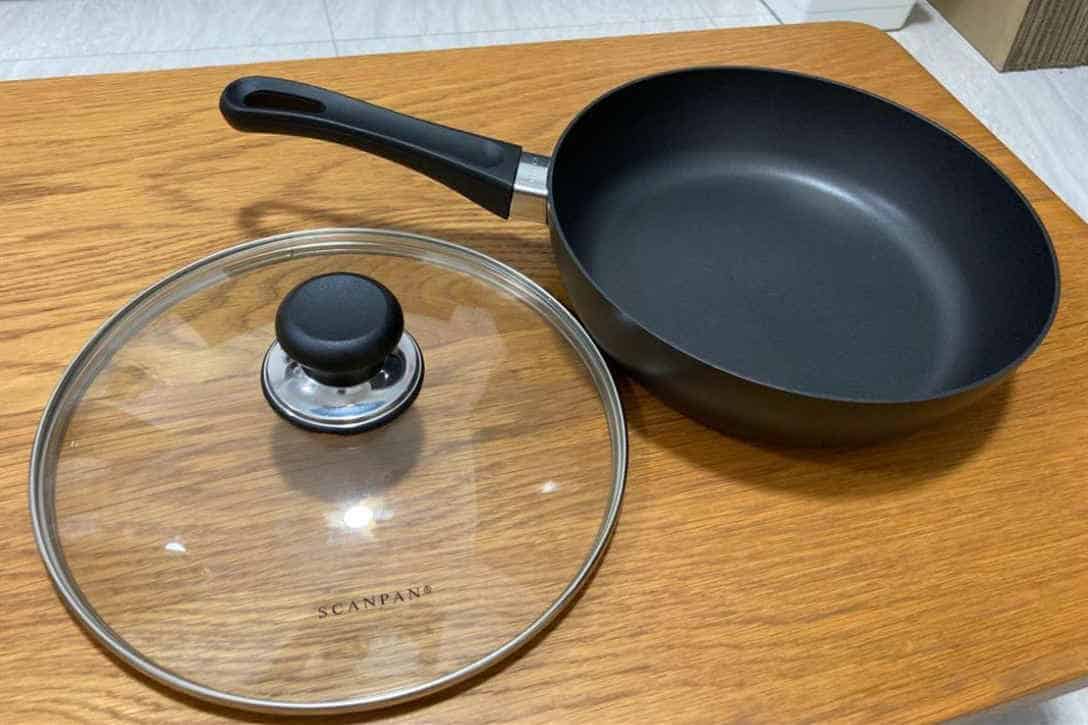
Scanpan has stood among the pioneers of sustainable and environment-friendly since 1956. The brand hails from the land of Ryomgård, Denmark. And you might be asking why its origin is essential for sustainability.
Well, Denmark has far stricter rules and regulations regarding branding products with environmental labels. It’s especially apparent when compared to other European countries or the US. By 2024, the company projects that 87% of its electricity will come from renewable sources.
Now, let’s get to the prime material this brand boasts: Stratanium. This technology offers a PFOA and PFOS-free coating in the pan. The first one in the market!
Its 5-ply pan makes it excellent for heat distribution and retention. Further, all of this brand’s pans use 100% recycled aluminum core, making it all the more sustainable.
Here are some of their series to get you started with this brand:
Classic: The classic series offers the features listed above and serves as the flagship series for the brand.
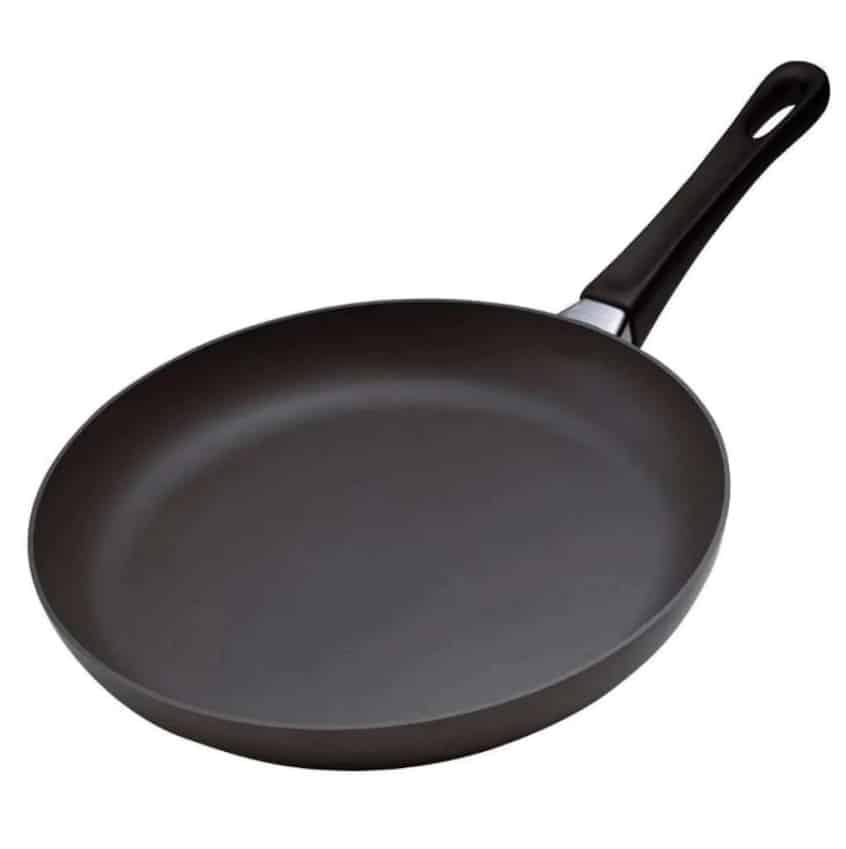
Induction Classic: This series is the same as the classic ones, only with induction compatibility.
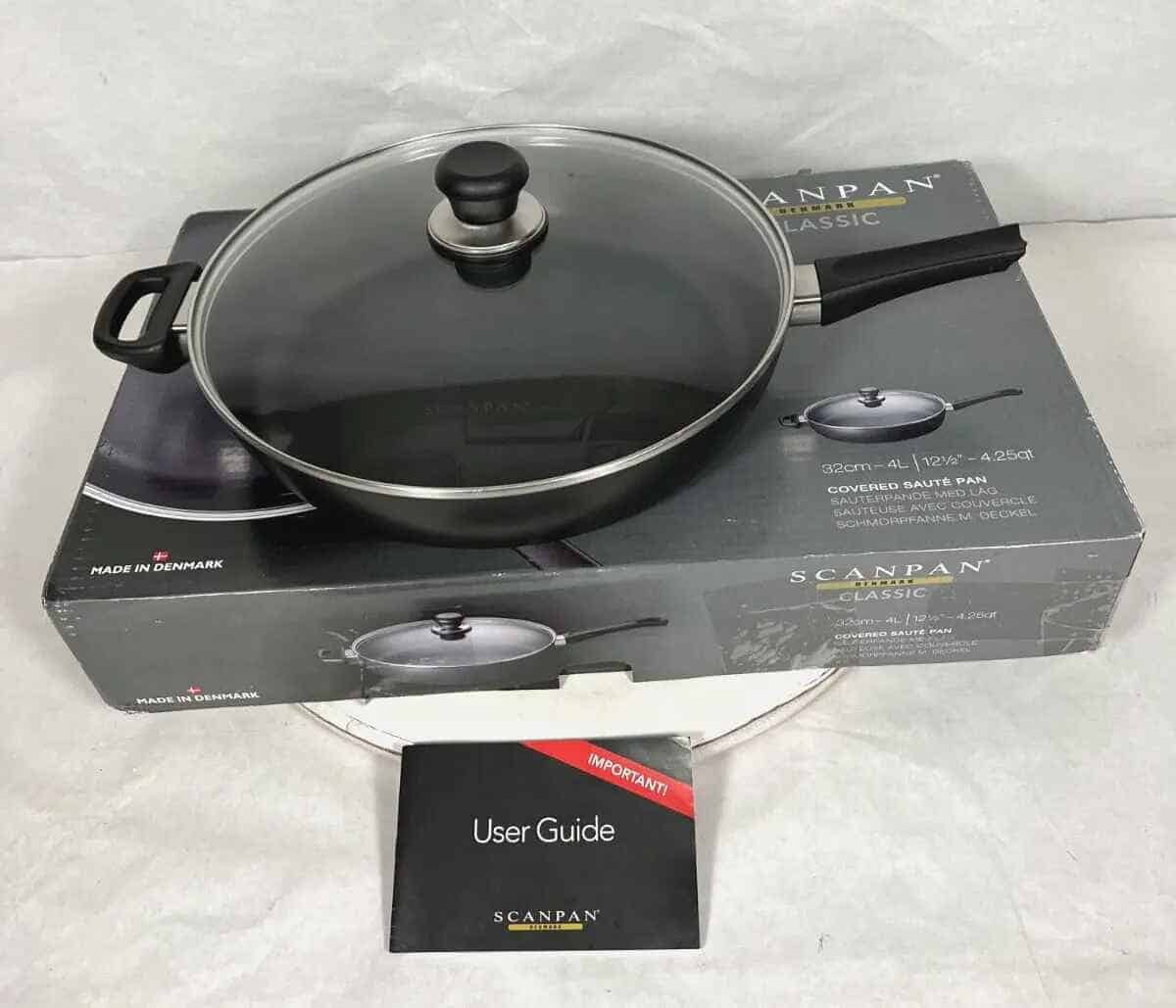
Pro IQ: The design is built for better induction cooking. It features a stay-cool handle along with stainless steel rim.
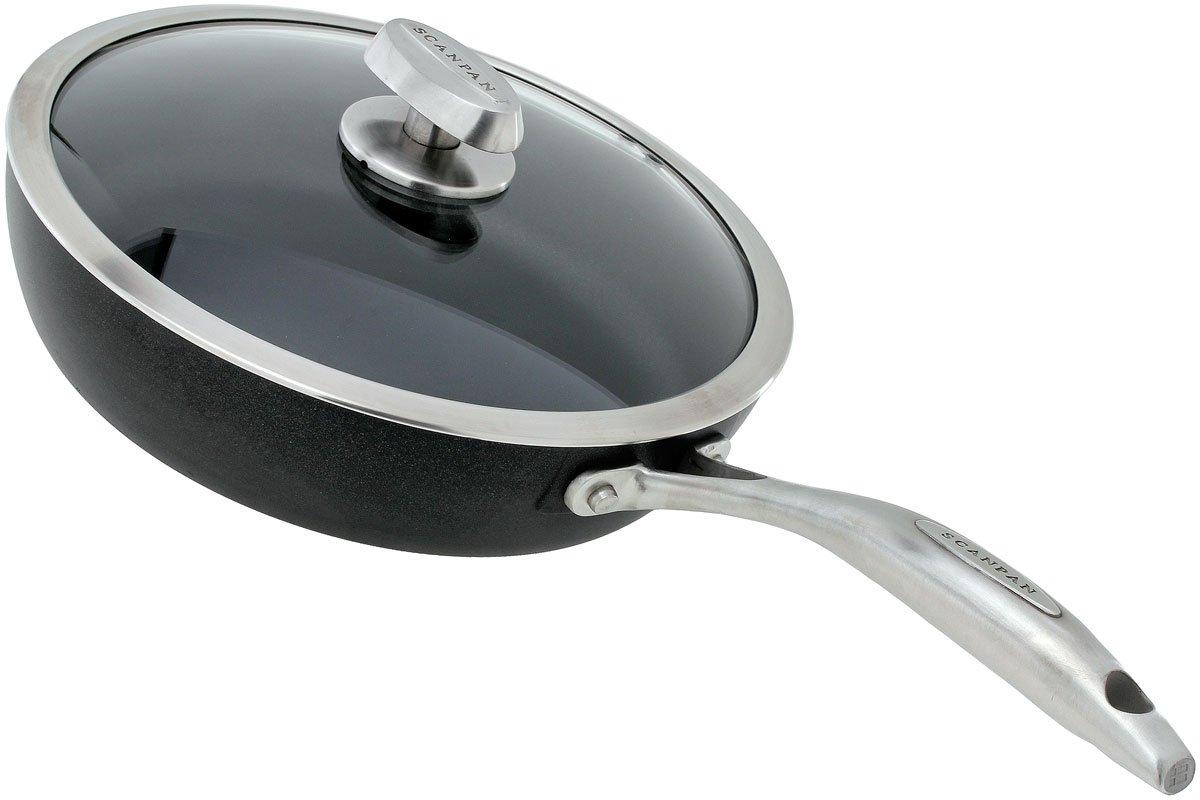
Professional: Brushed stainless steel finished along with domed lids. Better durability and a very heavy-duty build.
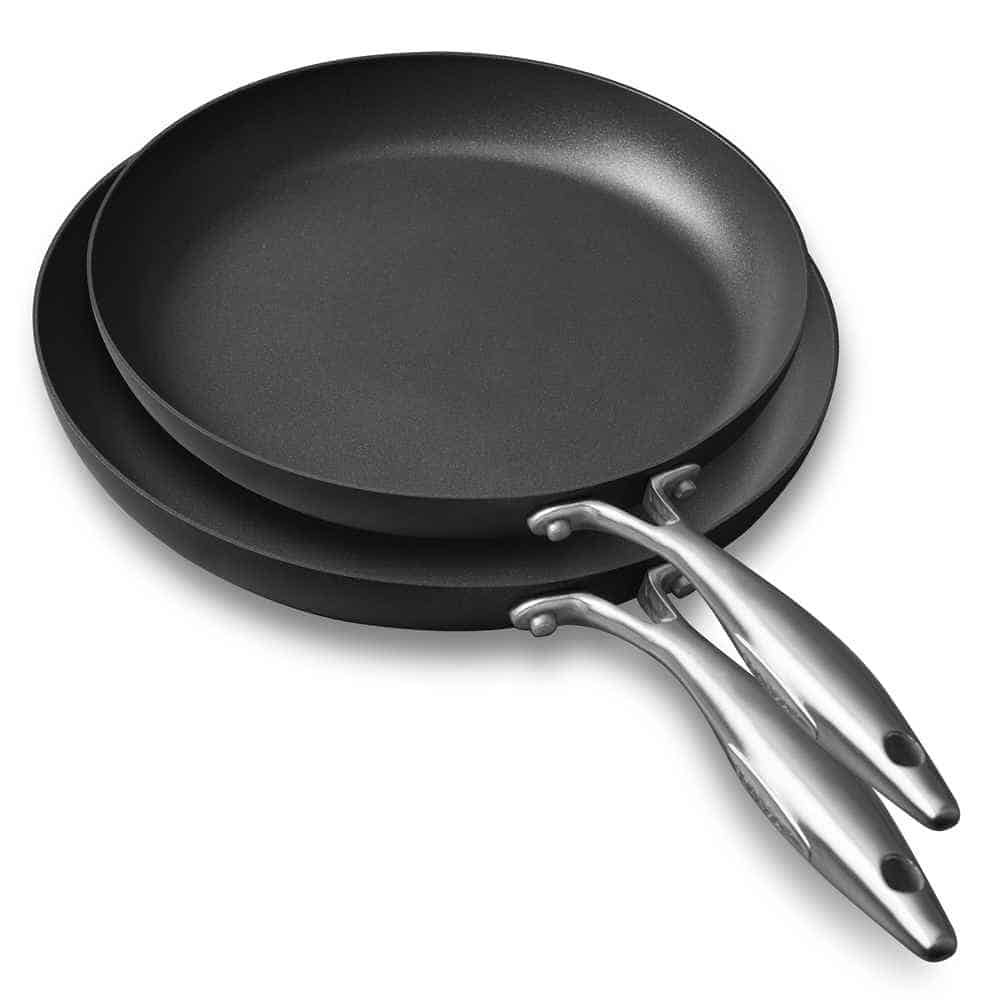
TECHNIQUE: The most advanced in the catalog. It features their model, Stratanium+ coating. Along with that is the combo of their domed glass lids and stainless handles.
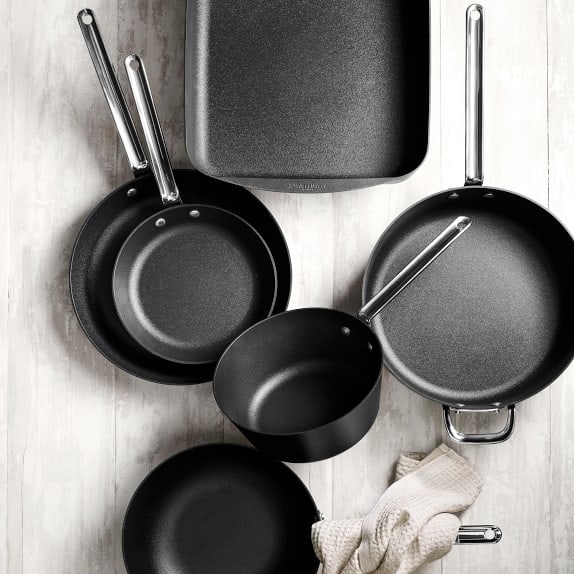
GreenPan Overview
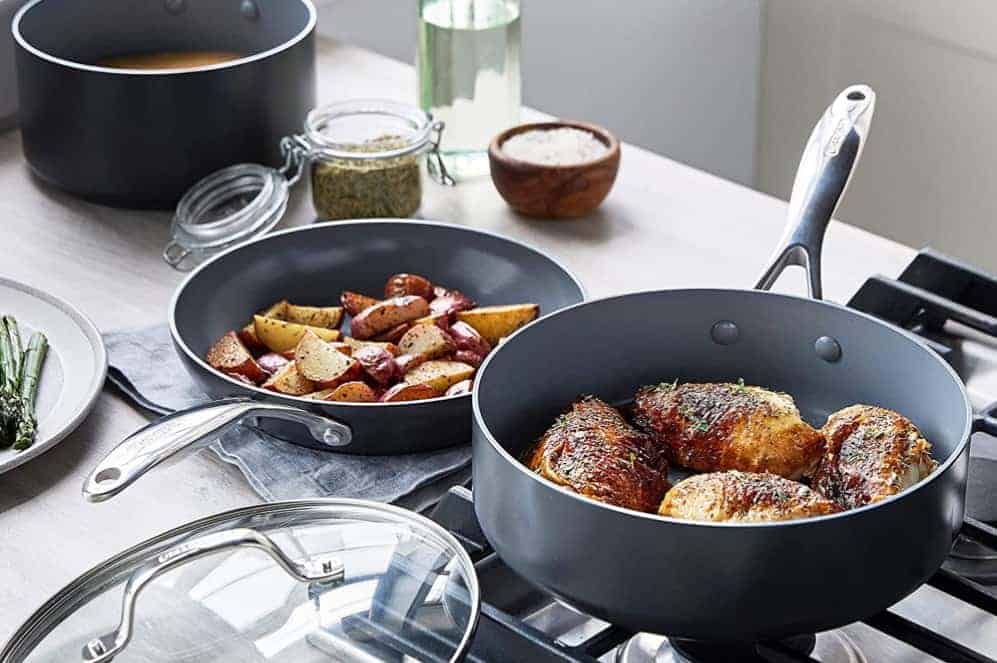
Regarding an organic non-stick pan, the GreenPan brand is among the most notorious ones. As most of us know, PFOA is among the cheapest and most commonly used coatings for non-stick pans. But there is one problem with this material: it can be toxic when ingested.
And, as pans are mainly used for cooking, founders Jan Helskens and Wim De Veirman created GreenPanto offer the solution. The result is a new ceramic non-stick coating made with the technology they dubbed Thermolon.
But that was when the brand was first brought into the market ten years ago. Today, their technology is still growing with their new 5th Generation Ceramic series. It has a diamond-infused layer while retaining its organic coating.
Here’s some of its series:
Reserve: This series has a glass lid and a colorful finish. It’s the flagship series of the brand.
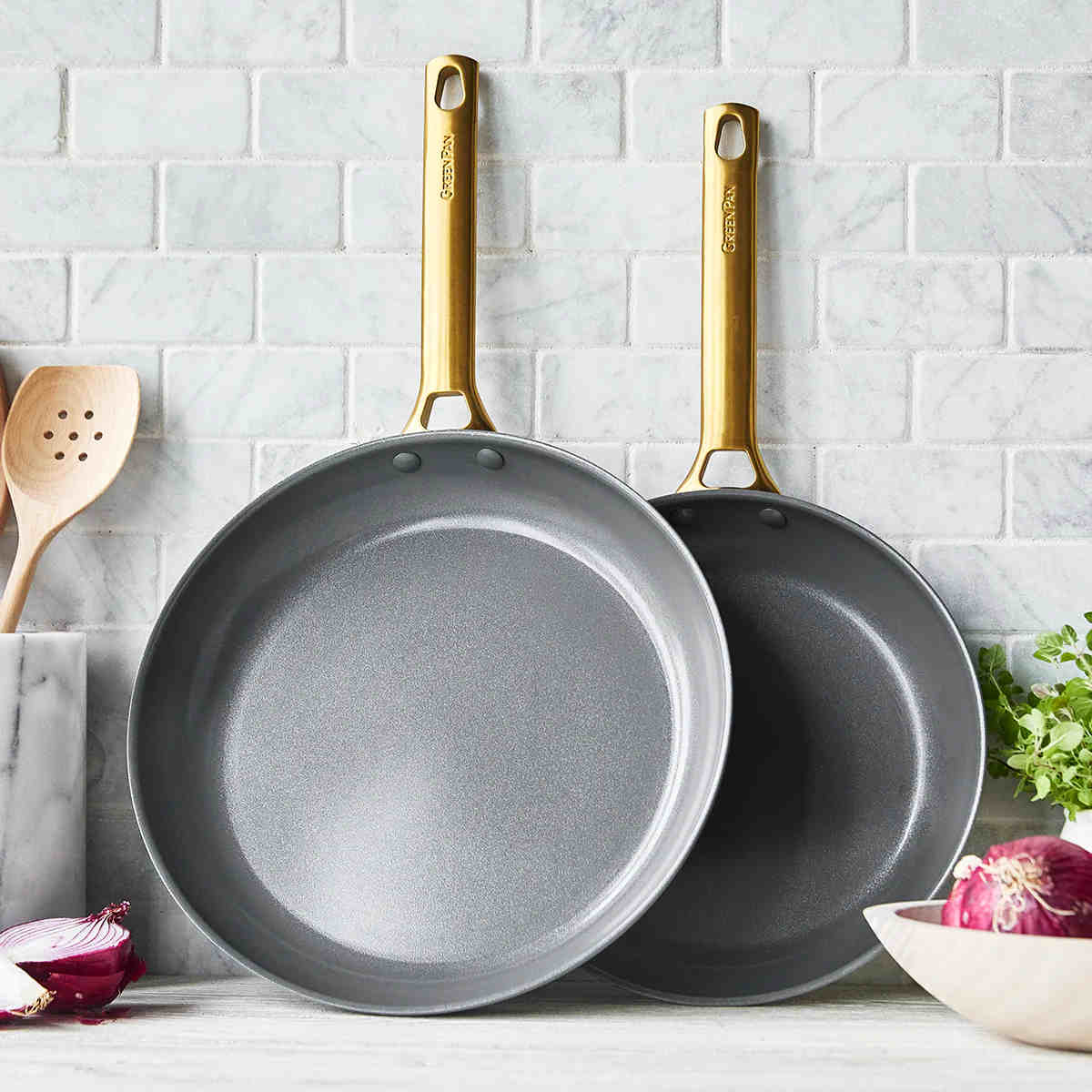
GP5 Colors Ceramic: The newest in the series. It offers a wide range of colors, perfect for completing your kitchen, whatever theme it has.
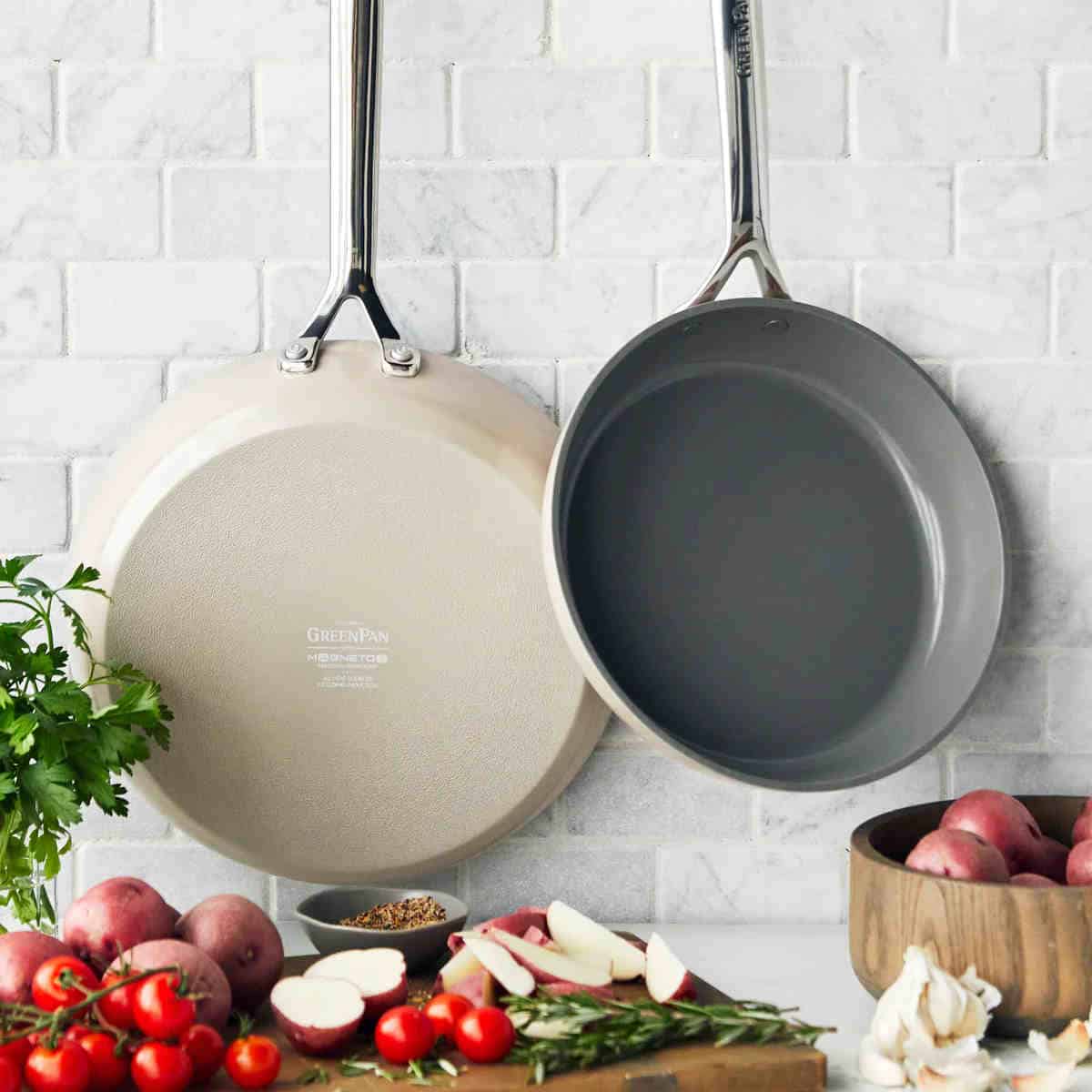
Venice Pro: This set of 3-ply stainless steel bodies is masterfully designed to stay sparkling and stain free –featuring a special Evershine™ finish that guarantees lower discoloration!
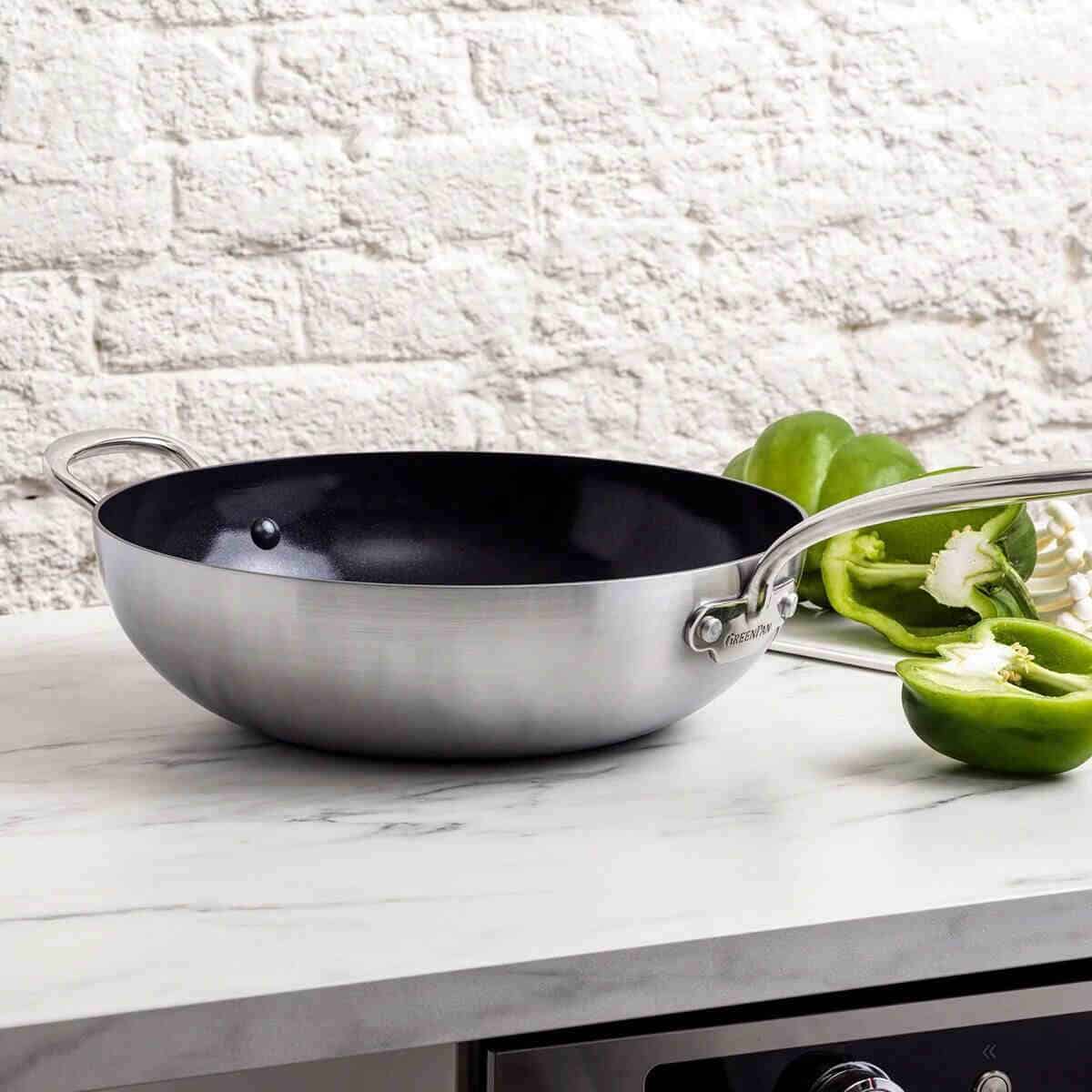
Chatham: Experience unparalleled durability and scratch resistance with the combo-forged design. Its ultra-strong hard anodized layer is like armor for your cookware than any of their series.
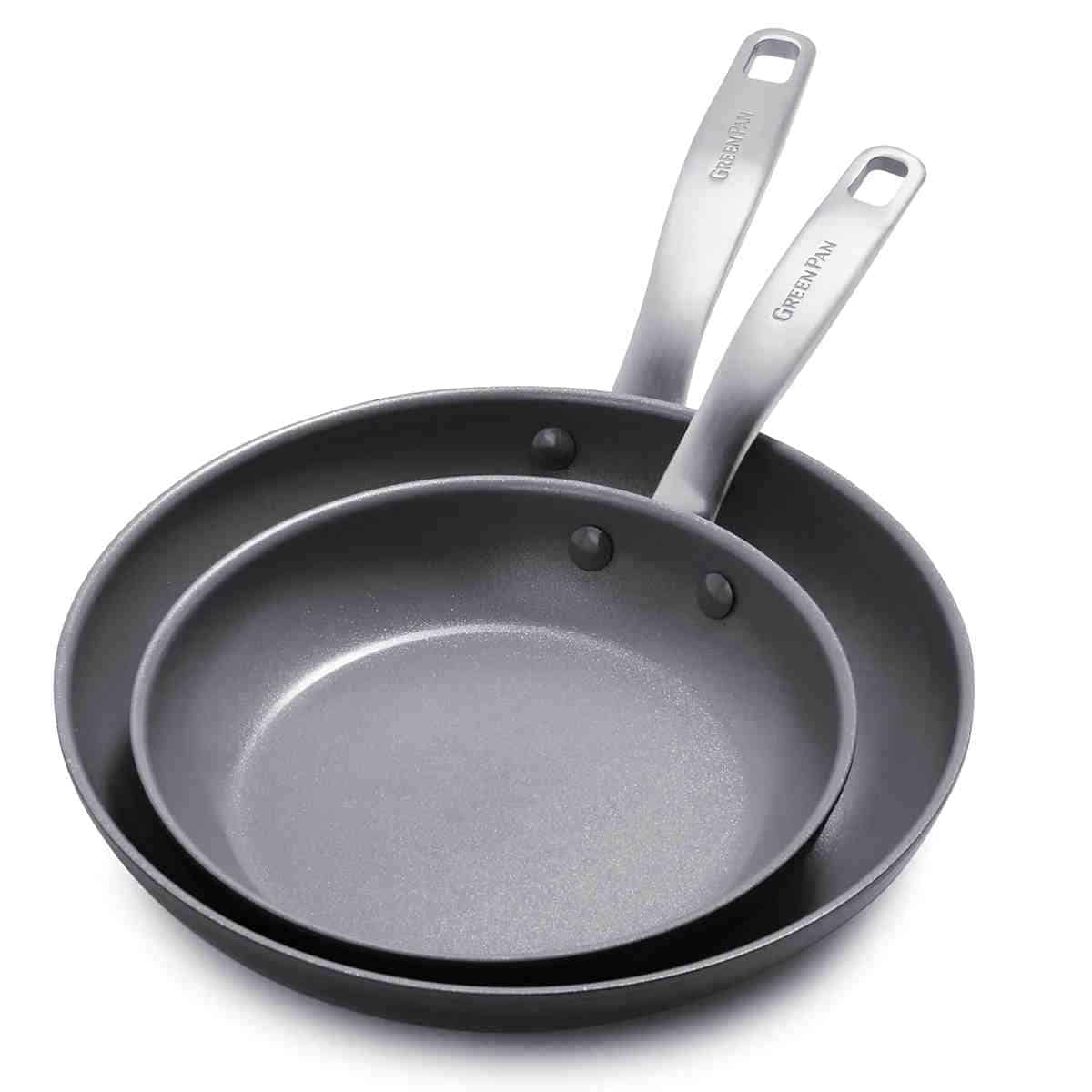
Scanpan vs. GreenPan: The Similarities
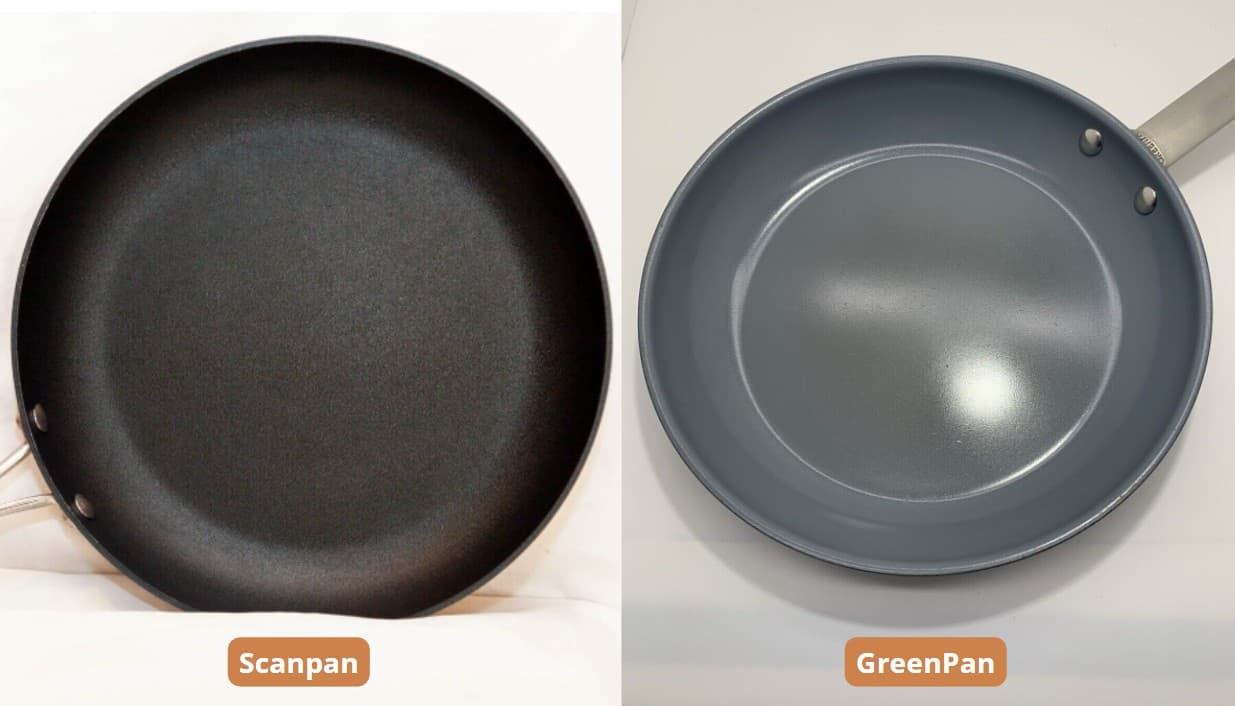
The similarities between Scanpan and GreenPanis a bit limited. That said, here are some of them:
Non-Toxic Coating
Although their technology is for their non-toxic coating, it’s one of the things they both have in common. As two brands pioneering the market for non-stick pans, this is an integral part of their build. Both of them use ceramic, just with different infused metals.
PFOA-Free
PFOA, or perfluorooctanoic acid, causes a lot of concern for many buyers of non-stick pans. Luckily, this brand offers a safe ceramic coating without this synthetic substance.
Easy Clean-Up
These brands are perfect for effortless clean-up. As both are non-stick and require a very low amount of oil when frying and searing. Also, most of their series are dishwasher-safe.
Scanpan vs. GreenPan: The Differences?
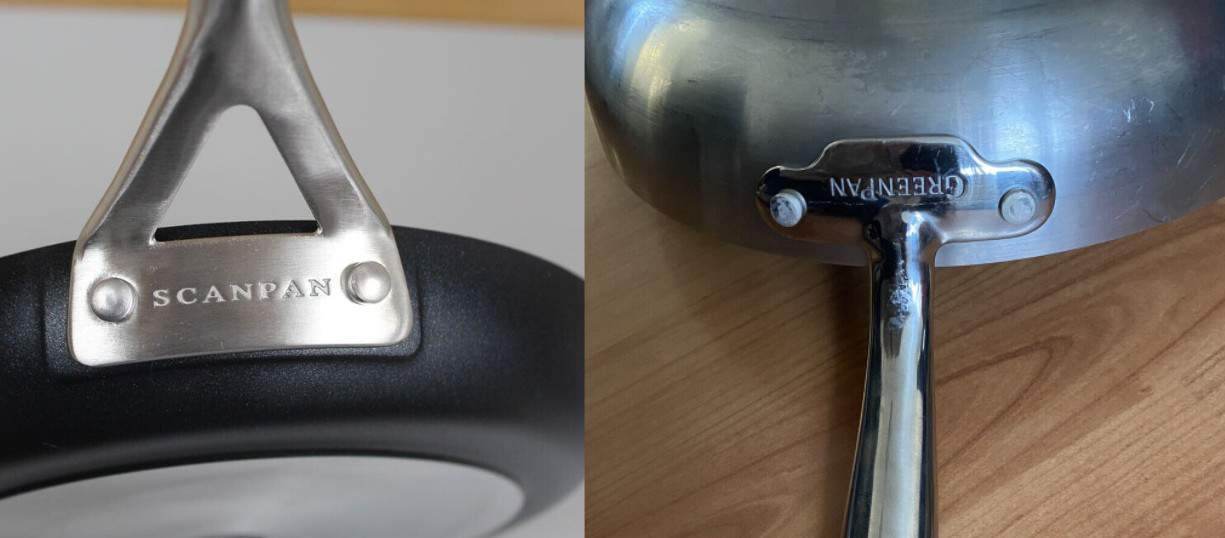
| Key Feature | Scanpan | GreenPan |
| Material and Construction | Cast Aluminum and Stainless Clad | Hard Anodized Aluminum or Stainless Clad |
| Non-Stick Properties | 5-layer Titanium-infused Stratanium Ceramic (with PTFE) | Diamond-infused Thermolon Ceramic |
| Heat Distribution and Retention | Even-Heat Great Retention | Evan Heat (even in low heat) Good Retention |
| Compatibility with Different Cooktops | Induction Compatible (5 Series) | Induction Compatible (10 Series) |
| Design and Durability | Aluminum Core More Durable | Hard Anodized Aluminum More Color Variation |
| Cooking Performance and Versatility | 500°F | 250°F to 600°F (Based on the Series) |
| Ease of Cleaning | Easy (Dishwasher Safe) | Easy (Dishwasher Safe) |
| Pricing Comparison | $$$$ | $$$ |
Now that we know the similarities between these two brands let’s get into their differences.
Let’s start with their materials and construction. Scanpan uses recycled aluminum as its core versus the hard anodized aluminum of GreenPan. So, the former’s better if you want a sustainable brand.
But how can that affect your cooking process?
Well, it means that the latter’s pan can conduct the heat more quickly than just the typical aluminum. That said, Scanpan’s has better retention and is better at searing food.
Their materials are also tied to their oven safety. Scanpan has better temperature control across all series. Meanwhile, GreenPan has higher heat resistance in some of its series but lower on average.
On the durability scale, the pure aluminum and 5-layer build of the former leads to a more long-lasting pan. Also, GreenPan just has a limited 2-year warranty. So, even though the other one has a higher price range, you can use it for longer.
Now, let’s get into their coating. The second brand is more excellent if you want an organic coat. GreenPan is free from PFOA, PFTE, and PFOS, which means it does not use these potentially harmful chemicals in its non-stick coatings.
With its coating, you are less likely to get toxic fumes, especially when the layer starts to chip off. Compare that to the coating for the other brand.
Scanpan is a type of cookware that has a coating of PTFE, which is also famously known as Teflon. Generally speaking, you should be safe to touch and use it as it’s not considered directly toxic. But interestingly, if consumed in large doses, scientists have suggested it might increase any individual’s cancer risks.
Scanpan’s scratch-resistant non-stick cookware will take your culinary creations to the next level with its patented ceramic titanium coating for a lasting finish. Or, if you’re looking for something even more robust and reliable, then GreenPan’s Thermolon non-stick coating is your go-to choice.
Scanpan vs. GreenPan: Pros and Cons
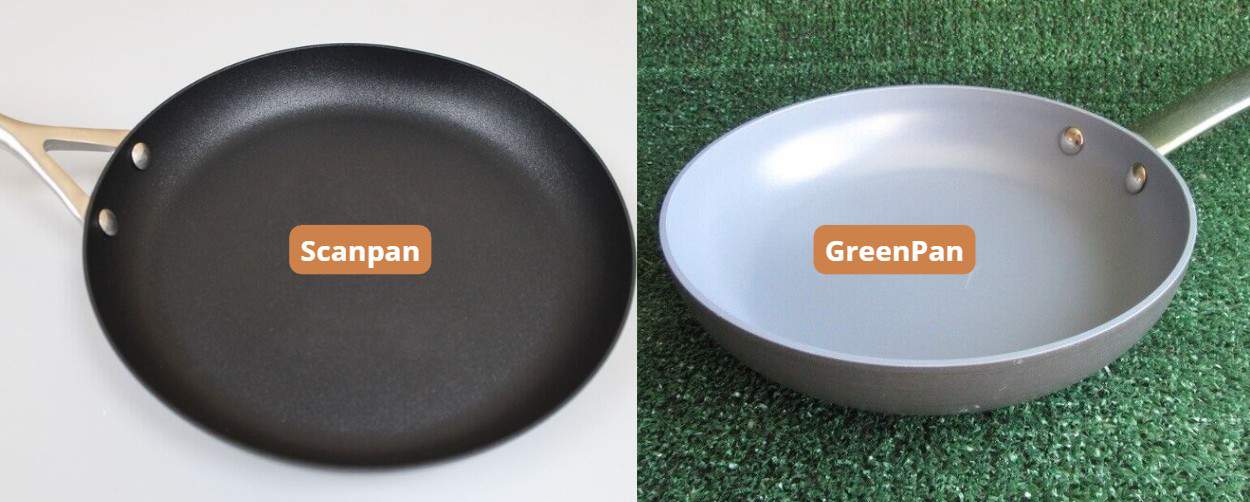
| Brand | Pros | Cons |
| Scanpan | · Longer Durability · Uses Recycled Materials · Better Oven Safety · Better Retention | · More Pricey · Contains PTFE |
| GreenPan | · More Color Choices · Less Pricey · Pure Organic · Excellent Heat Transfer | · Shorter Warranty · Limited Oven Safety |
The pros and cons of both brands can be either beneficial or a hindrance based on your needs. Let’s dive in a bit deeper.
Scanpan Pros and Cons
Due to its recycled core, this brand offers more when it comes to green energy and sustainability. Along with that, it’s also more durable and less likely prone to scratch.
Another pro is its better oven safety. All of its lids and handles can handle the same temperature as their pan.
So, you don’t have to avoid recipes that include the use of the lid. Which offers better cooking with its incredible heat retention. You are guaranteed to get an excellent crispy and brown oven sear with this pan.
That said, with its durability and more environment-conscious practices, it also sells at a higher price.
GreenPanPros and Cons
Less pricey with more colors to choose from, this brand has that edge over the others. Another pro is that it’s a healthier choice for cooking with no chemicals, including PFOA, PFAS, lead, and cadmium!
On another side is its cons. GreenPan may come with a shorter warranty than other brands, so read through the terms and conditions of your desired product carefully before committing.
Consumer Reviews and Ratings
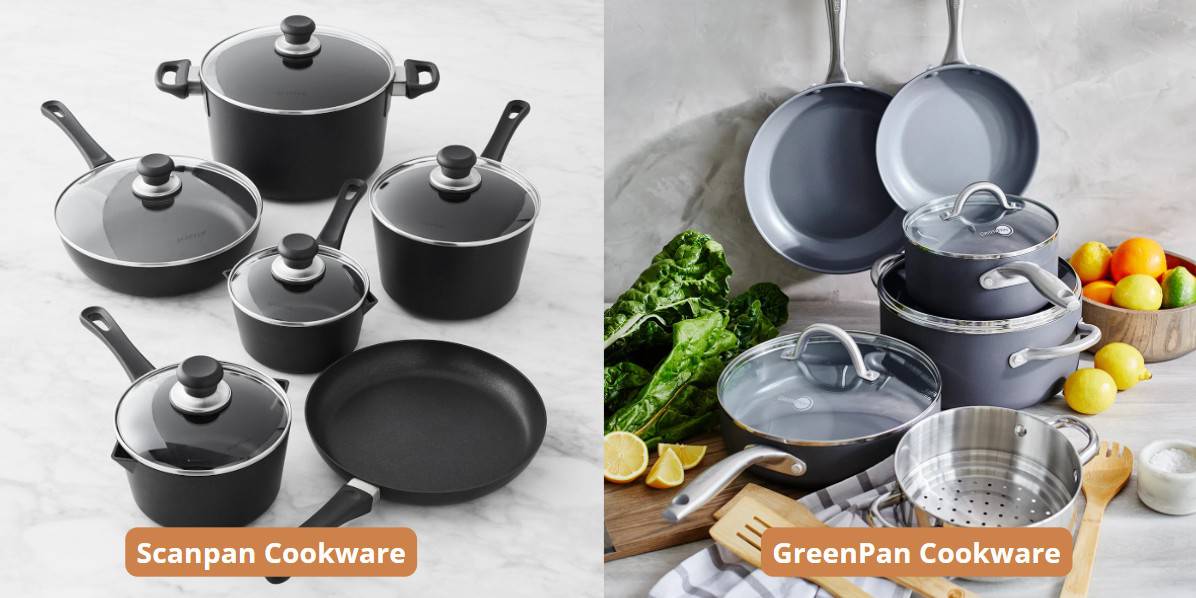
Now that we know all of the professional features these brands have let’s get into their reviews and ratings across the boards.
This rating is for the Scanpan cookware sourced from Amazon.com:
- Pro IQ 12.5” Fry Pan: 4.6 out of 5 (284 Ratings)
- HaptIQ Stainless Steel-Aluminum 11” Fry Pan: 4.7 out of 5 (290 Ratings)
- CTX 8” Fry Pan: 4.5 out of 5 (973 Ratings)
These are for GreenPan:
- Paris Pro Hard-Anodized 10″ and 12″ Frying Pan: 4.4 out of 5 (274 Ratings)
- Valencia Pro Hard Anodized: 4.6 out of 5 (249 Ratings)
- Lima Hard Anodized 10″ Frying Pan: 4.4 out of 5 (1,653 Ratings)
As you can see, most of the rating falls around the same rate. You can also check the individual reviews so you can make a better judgment.
Scanpan vs. GreenPan: Which is the Pan for You?
Finding the perfect brand for you comes down to YOUR preferences and needs! With this easier, compare specific models or collections from each brand to determine which one treats you best. You’ll have the BEST outcome when you make an informed decision.
Conclusion
Now that you know the similarities and differences between these brands and their features, you can make the best choice for you. No matter your choice between Scanpan vs. GreenPan, you’ll get excellent cookware that will last for years!
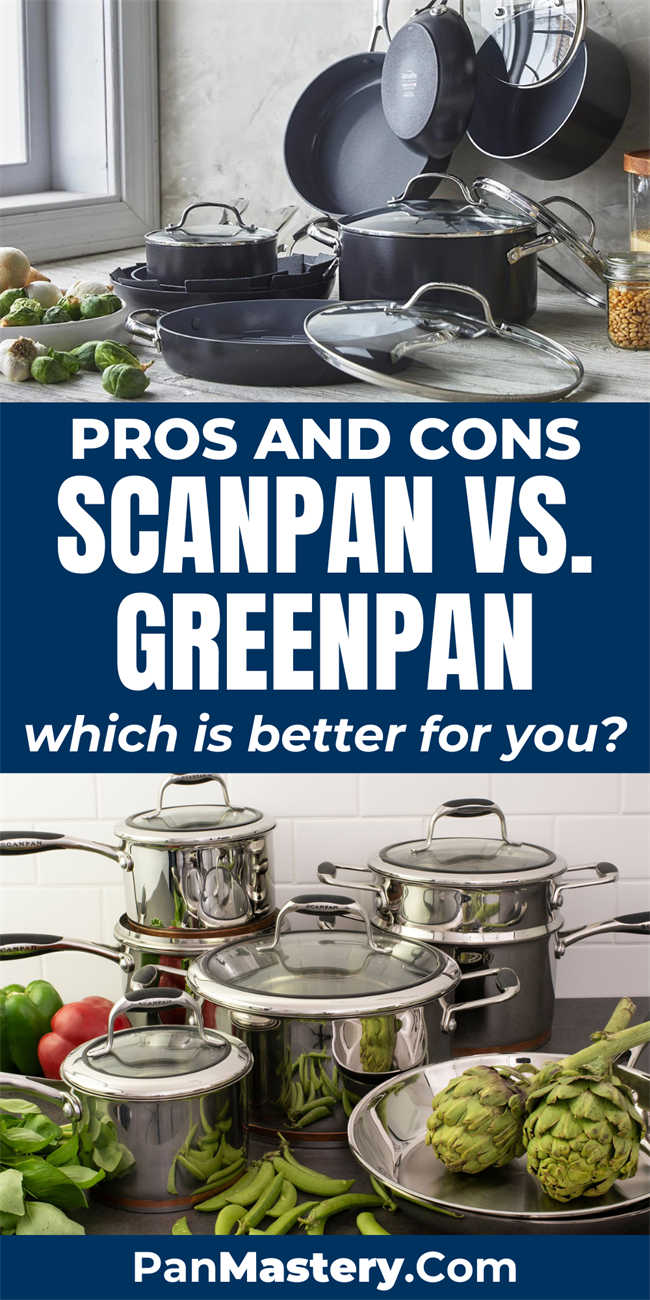

Michael Johnson is the founder of Pan Mastery, Inspired by his blacksmith grandfather’s legacy has a deep appreciation for hand-crafted pots and pans, he provides invaluable guides, reviews, and recipes to enhance your culinary journey.

